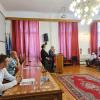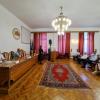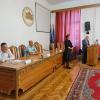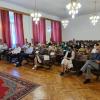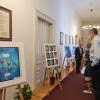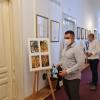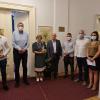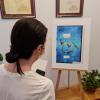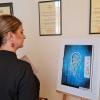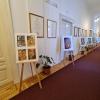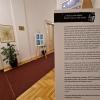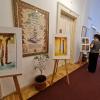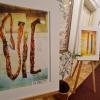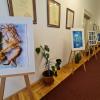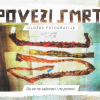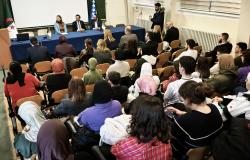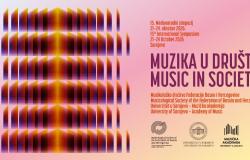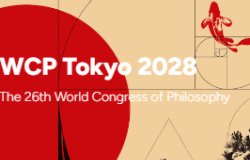Ligatures of Death Exhibition Opened on the Occasion of Commemorating the 26th Srebrenica Genocide Anniversary
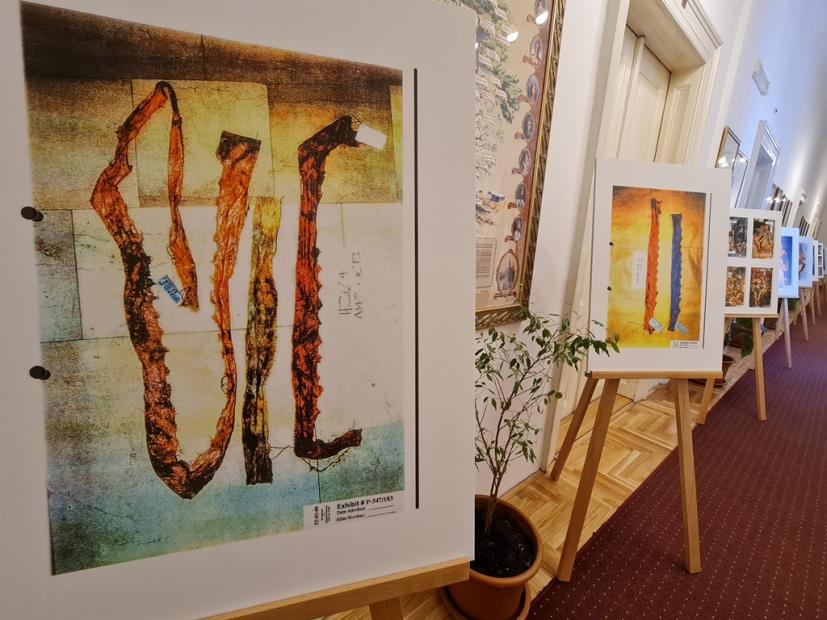
The Srebrenica-Potočari Memorial Center, in cooperation with the University of Sarajevo, organized an exhibition Ligatures of Death to commemorate the 26th anniversary of the Srebrenica genocide.
The exhibition consists of a collection of photographs from the archives of the International Criminal Tribunal for the Former Yugoslavia (ICTY) and the archives of the Srebrenica-Potočari Memorial Center, which show the ligatures found in mass graves in the Srebrenica area. In addition to the exhibition of photographs, the exhibition is accompanied by a catalog and six billboards set up in the Sarajevo Canton with the message Not to be forgotten and not to be repeated.
The exhibition was opened on Wednesday, 7 July 2021 in the University of Sarajevo Rectorate by: Prof. Dr. Rifat Škrijelj, University of Sarajevo Rector, Azir Osmanović, Srebrenica - Potočari Memorial Center Curator, and Dženat Dreković, Exhibition Editor. The moderator was Mr. Sc. Nadina Grebović-Lendo.
In his address, Rector Škrijelj pointed out that photography is one of the most powerful media that is able to convey this kind of strong message of non-violence and peace, and expressed confidence that it will not bypass anyone who decides to visit the exhibition, read the catalog representing this exhibition or, on the other hand, they stop in front of one of the six billboards in Sarajevo Canton announcing it to the general public.
“Every ligature, every wire we see is a tragedy of scale that is inconceivable to the human mind that believes in the ideals of humanism and humanity, to good people who want to believe that man is not a wolf to man” said Rector Škrijelj. He also added that as a society and as a community that survived genocide, we have a serious, historical, responsibility to resolutely take on the role of one of the leaders of a global movement that will rise up against war crimes and violence in general as a way to resolve our conflicts and disagreements. “I hear every ligature and every wire as the cry of those who are no longer with us and who send a message to heaven that crime and violence can never, but never, be a way to defend the development of humanity and build the future of the communities in which we live emphasized Rector Škrijelj.
The Srebrenica-Potočari Memorial Center houses a library, archive and museum as permanent custodians of memory. We remember every day, one day remains in our memory! Truth, dialogue and the future are the messages we often hear from the people who work at the Center.
The curator of the Srebrenica - Potočari Memorial Center, Azir Osmanović, thanked the University of Sarajevo for their cooperation in organizing the exhibition Connections of Death. He also reminded that the Srebrenica-Potočari Memorial Center: Memorial and Cemetery for Victims of Genocide from 1995 and the University of Sarajevo signed a Memorandum of Understanding and Cooperation, which agreed on the need for joint action and management of projects and activities in the field of combating denial of genocide, the rights of victims of war crimes, human rights, peacebuilding and transitional justice.
The documentary photographs presented at the exhibition were not easy to choose from the collections of the Memorial Center. The connections of death have their own story, they are a message not to be forgotten and not to be repeated.
Dženat Dreković, the editor of the exhibition, pointed out that photography, as a medium chosen to commemorate the Srebrenica genocide, is one of the key factors in proving this horrific crime.
“Photography is a reliable witness to events, it enables humanity to perceive the past directly, without intermediaries, in which its revolutionary role is. Basically, photography is subversive not when it terrifies, distorts or even stigmatizes, but when it is thoughtful. This is exactly what this exhibition is like, in which case it must not be understood or perceived in a different way from what it is and what it represents” said Dženat Dreković.
The exhibition will be open to the public from 12 to 16 July 2021 from 10:00 to 13:00 in the University of Sarajevo Rectorate.
We remind you that through coordinated activities at the University of Sarajevo during 2020, 5,000 library units were collected for the Library of the Memorial Center, which today stores more than 11,000 volumes. The University of Sarajevo, through the activities of the Library of the University of Sarajevo, will work on the organization of the funds of the Library of the Memorial Center. The formation of the Srebrenica collections and the General Fund will make the Library of the Memorial Center recognizable among researchers and historians and the wider academic community as a place where material on the Srebrenica genocide is gathered. The library has books and non-books (photographs, pictures, maps…). The material presented at the exhibition is also part of the mentioned funds. The Srebrenica-Potočari Memorial Center houses a library, archive and museum as permanent custodians of memory.
Organizing Committee: Prof. Dr. Rifat Škrijelj, Rector, Prof. Dr. Tamara Karača-Beljak, Vice-Rector for Arts, Artistic Research, Culture and Sports, Emir Suljagić, Srebrenica Memorial Center, Potočari Director.
Committee for the Realization of the Exhibition: Mr. Sc. Nadina Grebović-Lendo, University of Sarajevo Library Director, Exhibition Coordinator, Vahid Piralić, UNSA Faculty of Philosophy Library, Mr. Sc. Azir Osmanović, Srebrenica Potočari Memorial Center Curator, Dženat Dreković, Exhibition Editor, Doz. Dr. Haris Dervišević, UNSA Faculty of Philosophy, Arts History Department.




